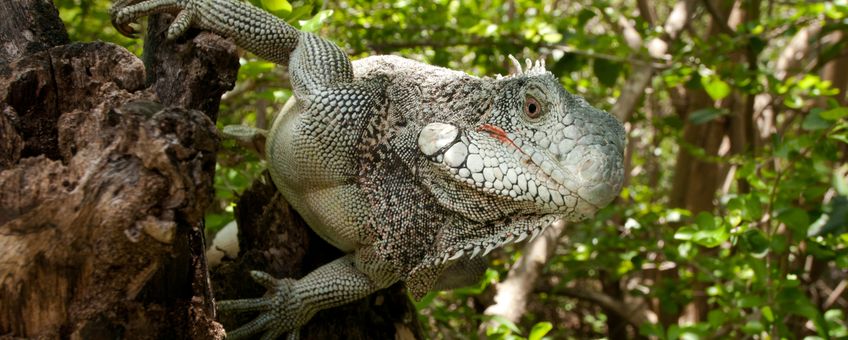
Adopt a proactive attitude towards nonnative green iguanas
Dutch Caribbean Nature Alliance (DCNA)Although endemic to several Caribbean islands, iguanas from the Iguana iguana complex, or common green iguanas, are mainly present within the Greater Caribbean region as invasive alien species. The currently established population can be found in more than 25 countries, among which six in Asia. Although natural between-island dispersal has once been described, the continuous spread of the iguanas is mainly facilitated by humans.

Associated consequences of these nonnative, uncontrolled iguana populations are solely negative and concern threats to biodiversity, agriculture and tourism, among others. For example, the main reason of classifying the Lesser Antillean Iguana as critically endangered has been its region wide decline through displacement by green iguanas. It is also feared that nonnative iguanas from St. Maarten will make their way to Saba, potential causing a similar fate for the recently elevated species. Lastly, these animals bring with them diseases that have been shown to spread to native reptiles.
So why are nonnative populations so hard to remove? Overall, the answer lies with the late initiation of managing and removing the populations, combined with the fact that iguanas become sexually mature at a young age and larger individuals can lay more than sixty eggs each year. Basically, population growth is so rapid that no time can be waisted once green iguanas arrive.
In their open-access letter, the authors indicate the extraordinary investment of financial resources as well as time in order to only reduce population sizes of unmanaged large populations. Several population reduction efforts are ongoing both in the Caribbean as well as on Fiji; some already spent over 200,000 US$, with the most comprehensive spending more than five million US$. Reflecting, five million US$ is one percent of the GBP of the Commonwealth of Dominica, the latest Caribbean island where nonnative iguanas have established themselves.
Although humans tend to remain inactive until they are directly affected, the need for improved biosecurity and proactive prevention of iguana incursions cannot be more evident. Acknowledging the many challenges that islands and their governments face in dealing with nonnative species, the authors state that “time is not an ally, but it is of the essence”. The letter provides on-the-ground insights and a range of recommendations that can aid island nations in their effort to remain free of nonnative iguanas.
More information
Read the full article (Knapp, C.R. et al. (2020) The global need to address threats from invasive alien iguanas.).
Text: Matthijs P. van den Burg, Natural history museum Madrid and DCNA
Photos: Henkjan Kievit, SHAPE/DCNA (lead photo: green iguana); Christian König, SHAPE/DCNA
